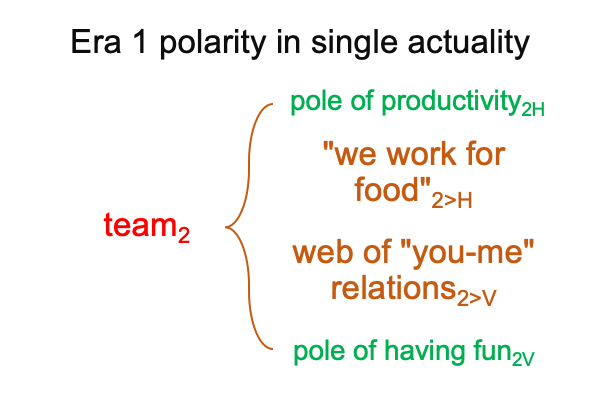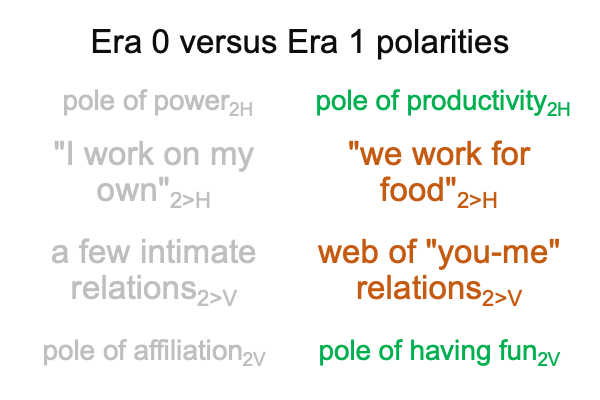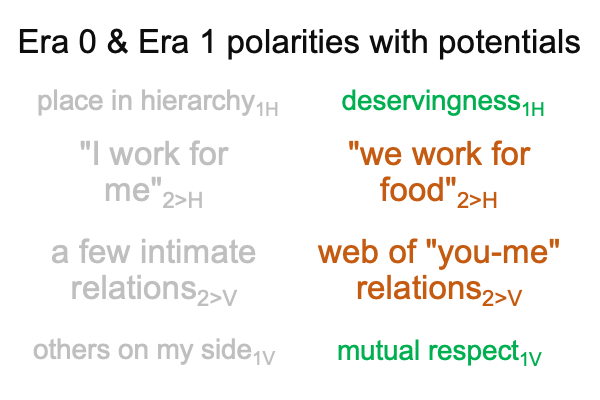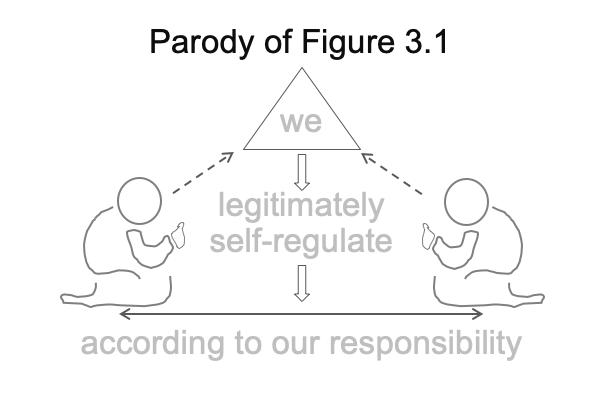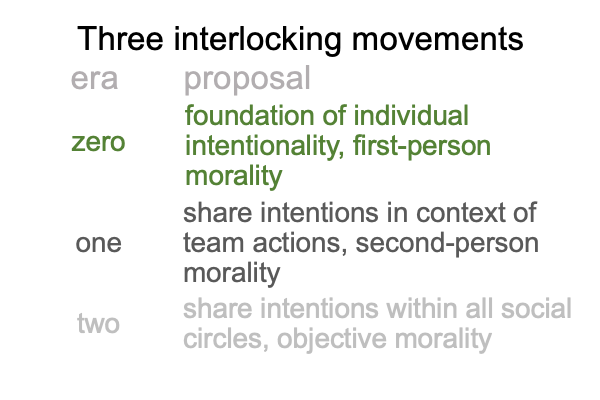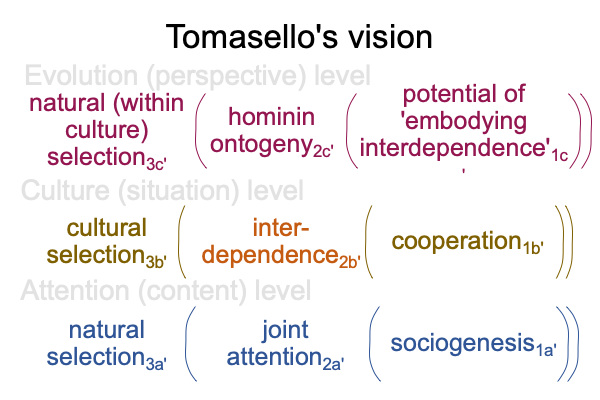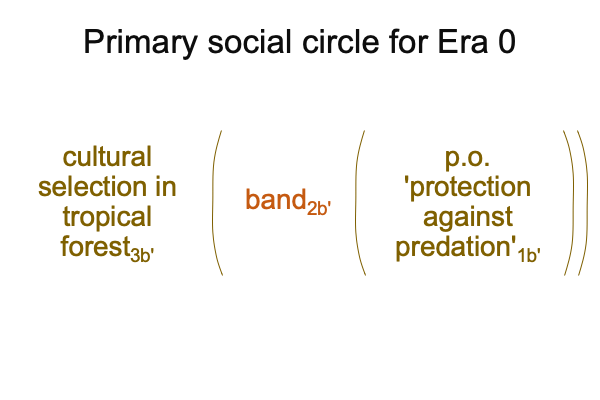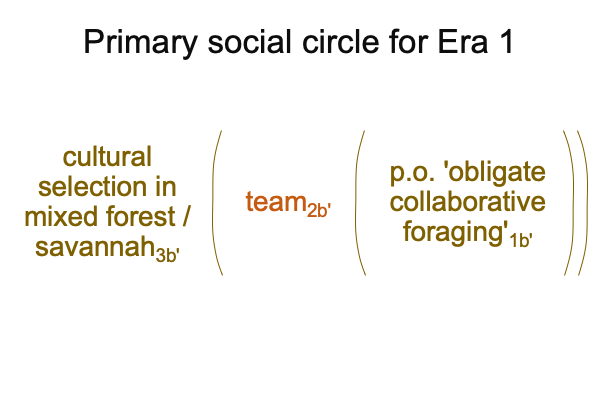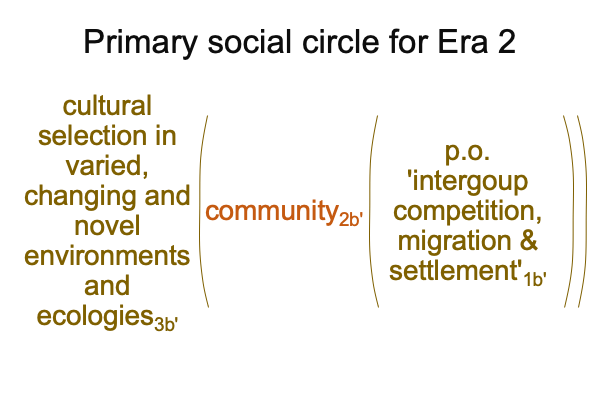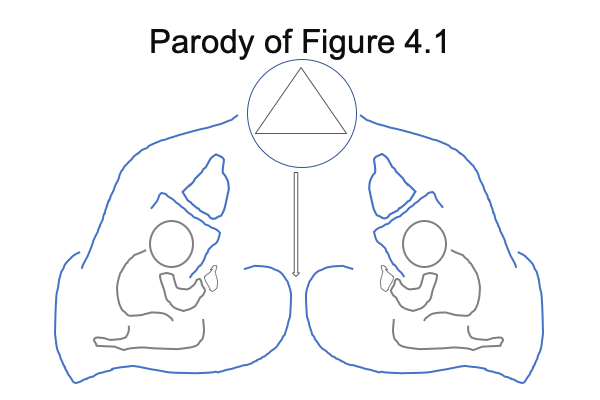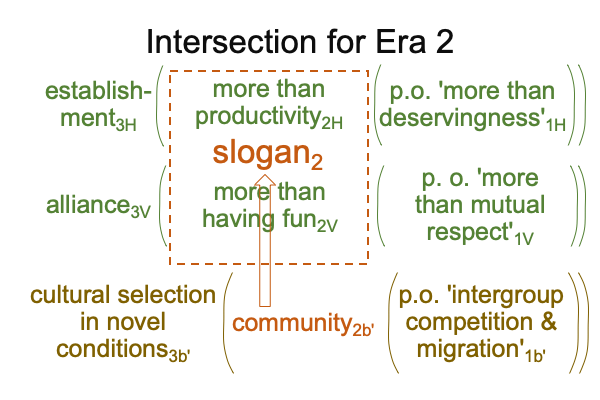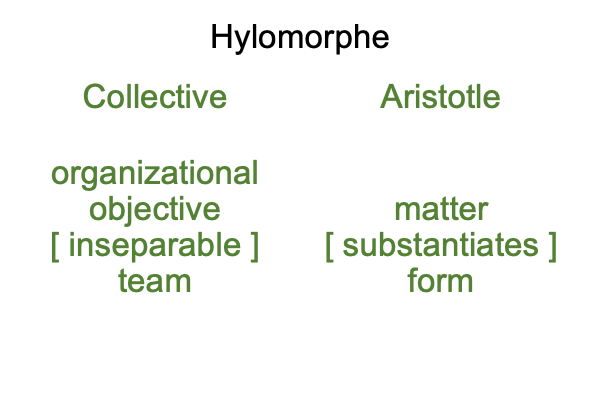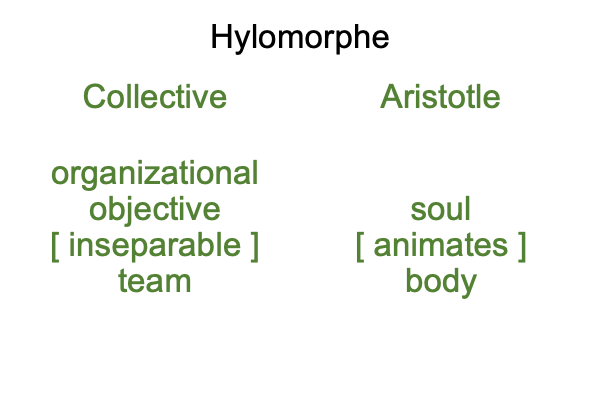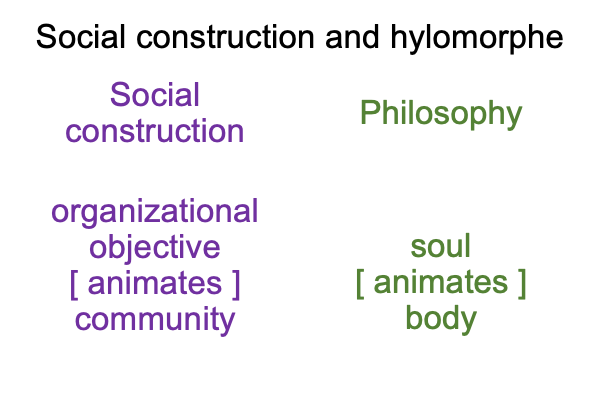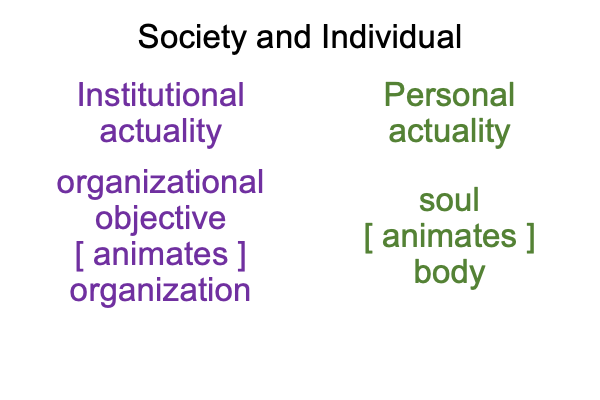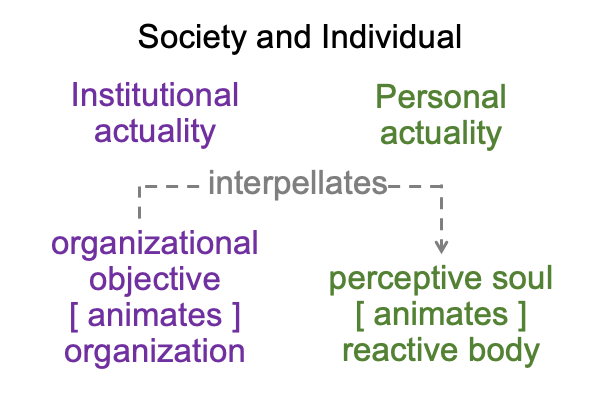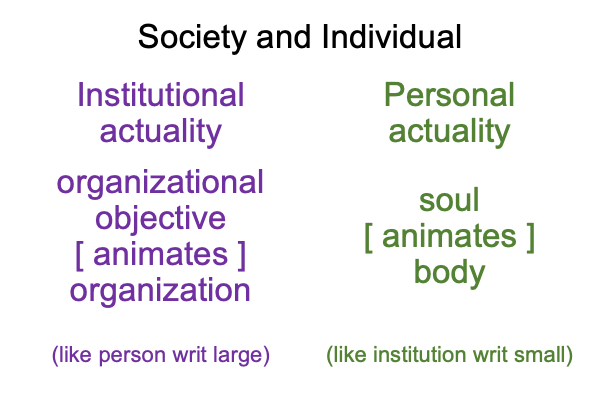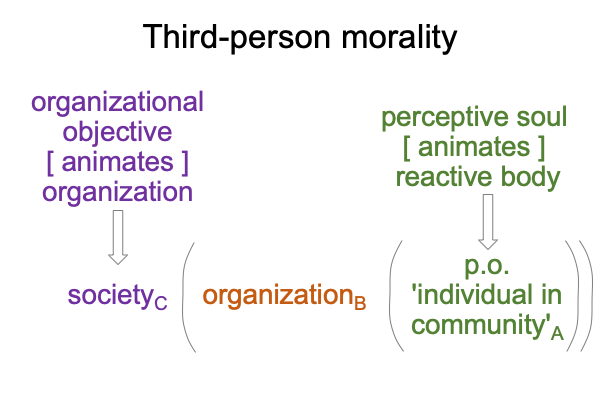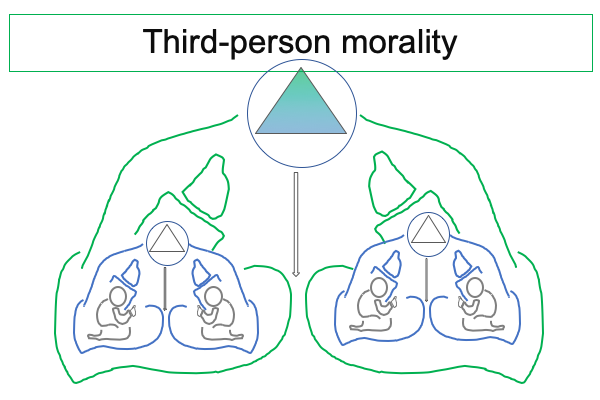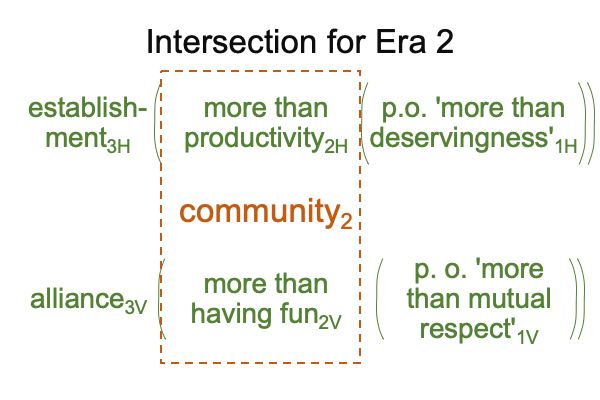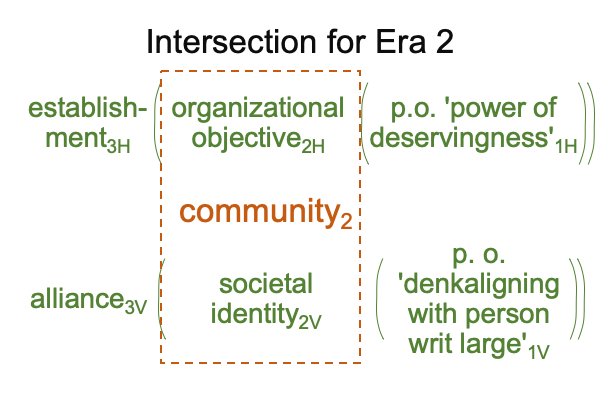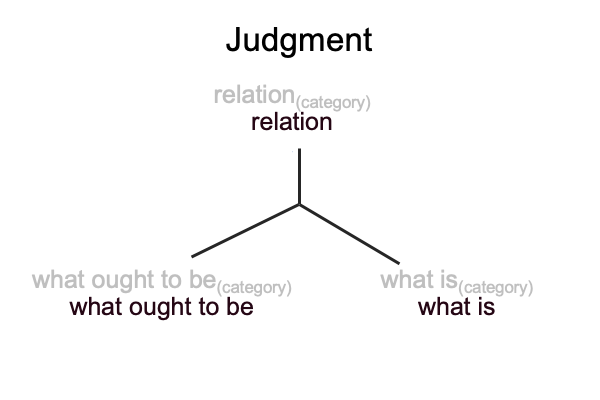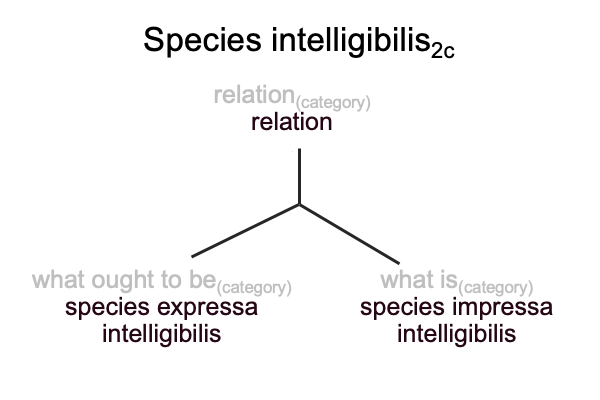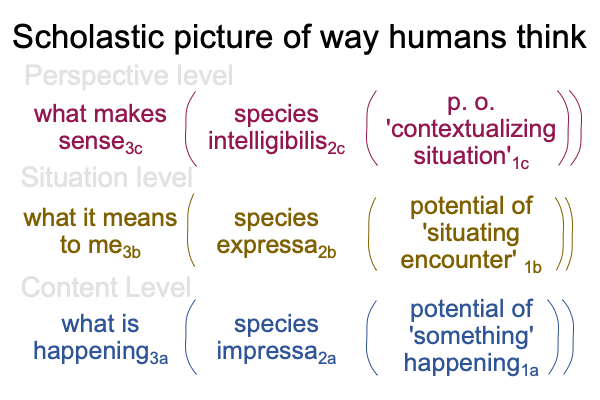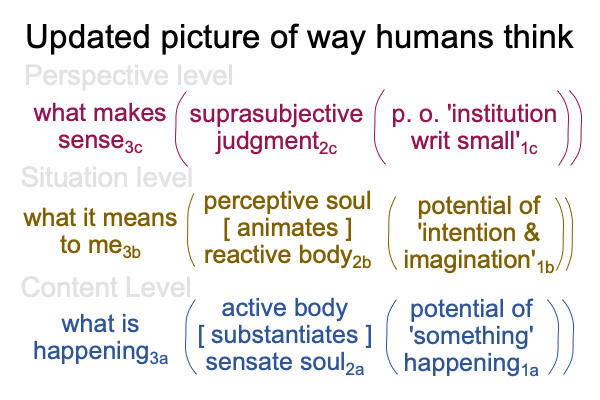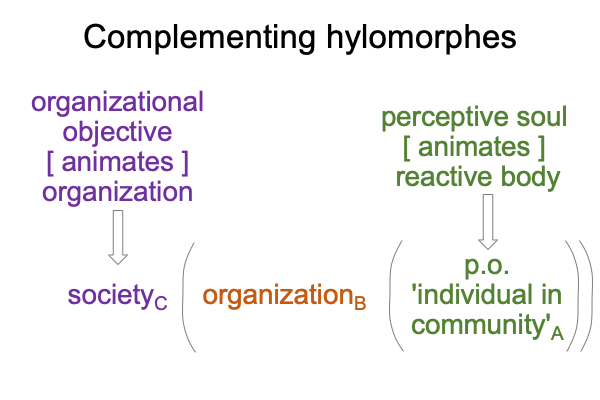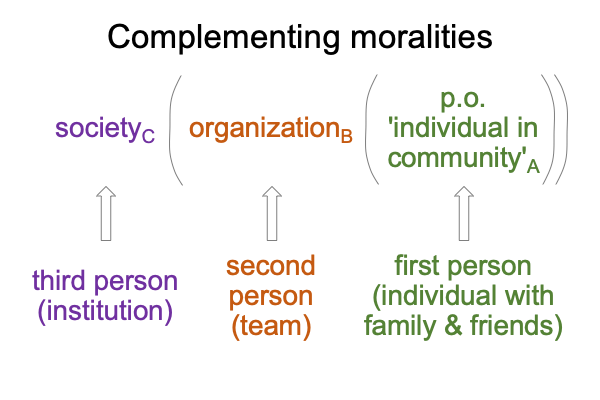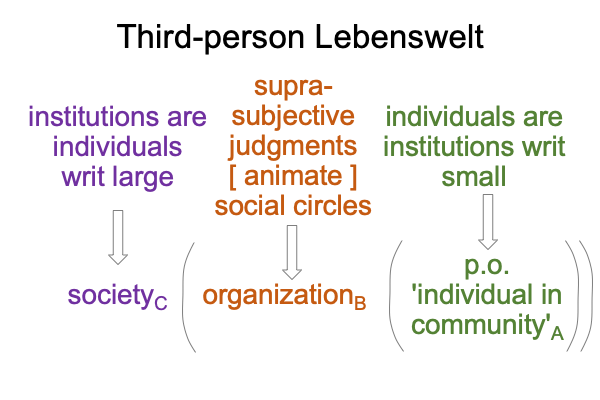Looking at Michael Tomasello’s Book (2016) “A Natural History of Human Morality” (Part 9 of 22)
0473 In the subsection titled, “Joint Intentionality”, Tomasello explores the nature of agency for a team. The team is aweb of “you-me” relations.
Here is another picture of the team as a social circle.
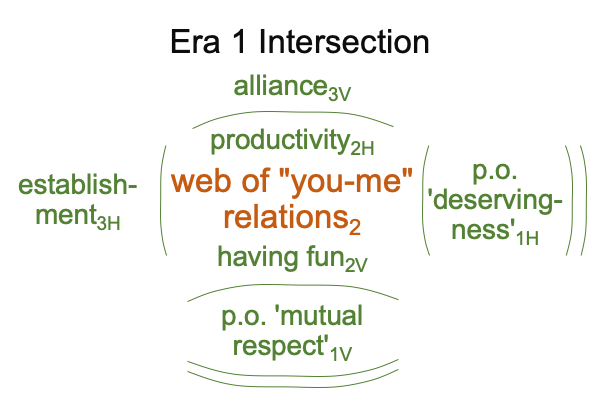
0474 The team is not a thing. The team is a being. The team is a purely relational structure composed of “you-me” relations. Each pair is a site of joint attention. It is also the occasion for joint agency. Each one of a 15 member teamjuggles 14 “you-me” relations. I estimate the number of unique relations to be over one-hundred. No wonder predators get confused.
0475 Each herd animal is only concerned with self and maybe a youngster. So, even though there are many animals in a herd, the trajectory of each can be reliably calculated.
Not so a team of hominins. No single predator can calculate the trajectory of one because the trajectories of the otherswill change in response to a predator pursuing one. They are bound by multiple “you-me” relations, making their behaviors difficult to predict.
Plus, these hominins carry rocks. Some carry sticks as well. These rocks and sticks present additional dangers that are difficult to anticipate.
0476 So, may I say that each “you-me” relation is a joint agent?
Each joint agent works towards a single end.
May I call this end, “an organizational objective”?
0477 Tomasello endeavors to discern the common ground underlying each joint agent.
Does the word, “trust”, suffice?
What about adding the word, “normative”?
Does that help?
0478 What does “normative” mean?
If I know that you are slow at throwing your rock at a predator, then I throw my rock a little earlier than I otherwise would, certain that your slowness will achieve good timing if I do so.
Tomasello explicitly abstracts these accommodations using terms, such as “roles” and “perspectives”.
Do Tomasello’s spoken words suffice?
0479 How should one describe the team?
Each team member serves as a node in a web of dyadic relations. Each dyad is a “you-me” relation. Each dyad operates within one web, the “we” of the team.
Tomasello struggles with explicit abstractions. Are these dyads “social contracts” or “extensions” or “second-person bonds” or what?
0480 Plus, there is another difficulty.
Which is more important, productivity2H or having fun2V?
By focusing on one, the researcher tends to neglect the other.
This difficulty explains the two titles for “team”. “We work for food” emphasizes productivity2H. “Web of ‘you-me’ relations” highlights having fun2V.
0481 Plus, there is the lure of further explicit abstraction. “Roles” and “perspectives” are gateways to “collaborative role-ideals” that become archetypal attractors for “you-me” arrangements. Examples include explorer-supporter, teacher-mentor, pusher-go along, leader-follower, daring-cautious, and so on. Each team activity contains its own suite of archetypal attractors. Can I go on to philosophize about how the principle of other-self equivalence applies?
How many rabbits of explicit abstraction can one pull out of the hat labeled either “we work for food” or “web of ‘you-me’ relations?
Read for yourself.

